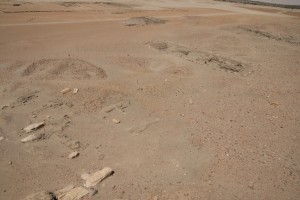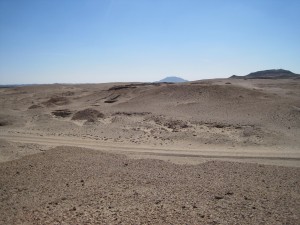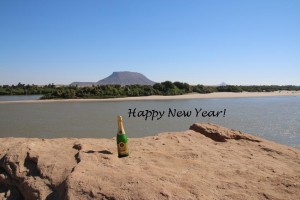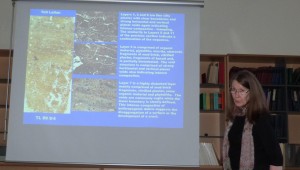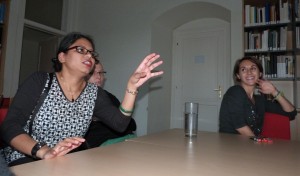In a few days, the first group of team members of AcrossBorders will be on the way back to Sudan. We will travel via Khartoum to Sai Island and will start our third season on January 1 (insha’allah). As in the previous seasons, AcrossBorders will focus on the New Kingdom on the large island of Sai. We plan to work in different sectors within the town area and to renew work in the New Kingdom cemetery SAC5.
The 2015 fieldwork will concentrate on the continuous excavation at SAV1E and SAV1W in the New Kingdom town, the new excavation of presumed tombs in cemetery SAC 5 and the documentation of already excavated material from SAV1N, SAV1E and SAV1W (sorting and recording of the material in the courtyard and working room).
One of the main goals of the project is to improve our understanding of the population on the island and to explore the nature of the coexistence of Egyptians and Nubians. A comparison between the material culture from the Egyptian style cemetery and the Egyptian town will be highly relevant in this respect; human remains will offer multiple aspects for analytical research, especially for studies of biological identities.
SAV1 East
Continued fieldwork in the site to the east of the Pharaonic town, labelled SAV1E, investigated for the first time in 2013, is planned for 2015. The orthogonal structure called “Building A” was largely exposed; we aim to finish the complete excavation of this important complex of the mid-18th Dynasty. Contemporaneous to the excavations, the pottery will be studied.
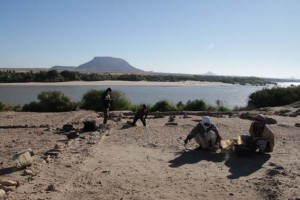 SAV1 West
SAV1 West
New fieldwork in a site to the west of the Pharaonic town, labelled SAV1W, was started in 2014. The western enclosure wall was traced in two squares and brick work datable to the 18th Dynasty exposed. Very promising New Kingdom deposits have been noticed within the town, to the east of the enclosure wall – several phases for these structures are visible in sections of Post-Pharaonic pits. This interesting area of 18th Dynasty occupation will be the focus of the 2015 season. Contemporaneous to the excavations, the pottery will be studied. Work will also focus on a detailed study of the stone tools from SAV1W by Silvia Prell.
SAC 5
In 2011, a geophysical survey was conducted in the area of the most important New Kingdom cemetery of Sai, SAC5 to the South of the Pharaonic town. We plan to excavate unexplored tombs visible on the magnetometric map of the cemetery, starting with the surroundings of tombs 14 and 15 in the southern part of the cemetery. Our work will include besides the study of the architecture, finds and human remains Structure-From-Motion techniques to create a 3D model of the cemetery and especially of the newly exposed tombs.
I am especially happy that Florence Thill (Lille University) will join us during the excavations in the cemetery and will offer her expertise based on her previous work in SAC 5.
Other tasks
This year, the team will be strengthened by two geoarchaeologists, Miranda Semple and Sayantani Neogi. They will build upon the geological survey conducted in 2014 and will focus on questions of the location and nature of the ancient harbour and the ancient stone quarries. Furthermore, they will collect samples to investigate the micromorphology of the Pharaonic town, focusing on formation processes and cultural activities. It is planned that they will compare the different excavation areas (SAV1N, SAV1W and SAV1E as well as SAV1) to each other. Environmental and climatic settings and changes during the New Kingdom will be focal points in the next years – being investigated by surveying, drilling and test pits.
Furthermore, I am very happy to welcome Frits Heinrich (archaeobotanist) and Jaime van der Heul from Groningen University as external experts – they will conduct archaeobotanical research and will take relevant samples in different areas of the town.
Without doubt another busy season is waiting for us – with renewed work in the cemetery, there will be fresh challenges and for sure a lot of new material. Thanks to all of the support by our Sudanese friends and colleagues and of course due to the joint efforts of all team members, I am more than confident that the results will be amazing and the 2015 season again very productive and highly interesting.
Looking much forward to travel to Sudan and wishing all team members & friends of AcrossBorders very happy holidays and a perfect start into 2015!

